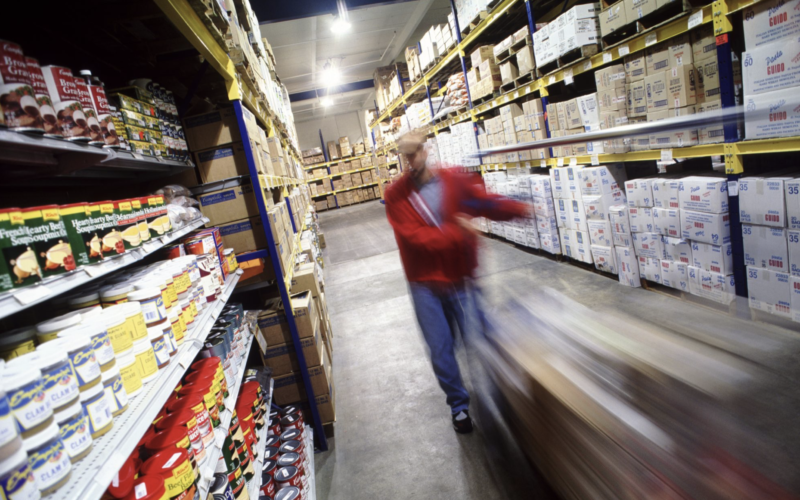By Mike Pomranz | FoodAndWine.Com
Troy Warren for CNT
At least one grocer said they had increased their inventory 50 percent.
What a difference a year makes. In 2020, toilet paper hoarding was a hot topic as worried consumers rushed to grocery stores at the start of the pandemic. But now, the grocery stores themselves are the ones reportedly doing the stockpiling as many retailers prepare themselves for price increases in the future.
Supermarket sales continue to be up even as pandemic fears lessen, according to the Wall Street Journal. And other factors have yet to normalize, as well — including shipping costs, labor issues, and supply shortages. The result appears to be continued pressure on pricing, and grocers are reportedly grabbing more goods now to help lock in their margins. Distributor and retailer SpartanNash told the WSJ that more than 100 suppliers notified them that they were raising prices, so the company increased its stockpile of longer life items like frozen meat and packaged foods by 20 to 25 percent.
David Smith — CEO of America’s largest wholesaler, Associated Wholesale Grocers — agreed. “We’re buying a lot of everything. Our inventories are up significantly over the same period last year,” he told the paper, specifying that stock was up 15 to 20 percent overall.
And Paul McLean — the chief merchandising officer for the grocer Stew Leonard’s — told the site Insider that they were increasing their inventories even higher: 50 percent, opting to buy ahead “whenever possible” to hold their margins. “We’re buying more ingredients for home cooks — including flour and spices,” he was quoted as saying. “We are also buying ahead on cleaning products for the fall and back to school.”
Still, stockpiling won’t solve all of grocers’ problems. For one, just as consumers stockpiling goods caused shortages at supermarkets, supermarkets stockpiling goods can cause shortages from suppliers. The WSJ reports that the number of orders being fulfilled by suppliers is down over 10 percent from where it was before the pandemic. And stockpiling itself comes at a cost. As Ken Boyer, a professor of supply chain management at Ohio State University, told the site Marketplace, “It’s the money to rent the space. It’s the cost of the extra time moving around.”
In Other NEWS



































